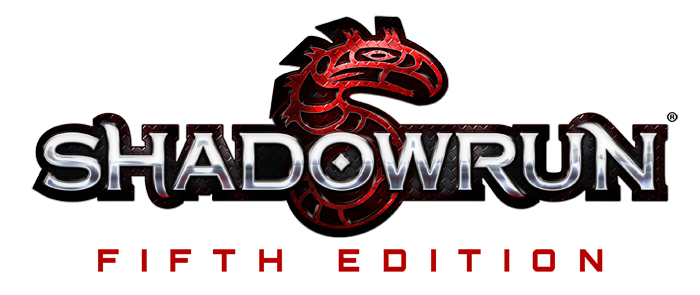
In a previous article on Teamwork in Shadowrun: Crossfire, I wrote briefly about the damage track on each obstacle. In this article I’ll expand on that topic by telling you the story of how we got there.
The early versions of the game were vastly different from the final design. The main elements that survived are the Black Market and general deck-building concept, and the idea that obstacles show up to threaten the runners.
We started out with a simple HP number on each obstacle. It represented the total amount of damage you needed to defeat the obstacle, much as you’ve seen in many other games. To make the game cooperative, we allowed multiple players to defeat an obstacle together.
In order to combine cards from different players, we experimented with simultaneous turns. This direction had some major problems. To be efficient with their damage dealing, players had to talk very explicitly about their hands. That didn’t feel good, so we tried not discussing our hands; but that led to a game of chicken to see who would play the first card. For example, if an obstacle has 6 HP and players A & B each have a 4-damage card and a 1-damage card in their hands, while players C & D each have 2- and 3-damage cards in hand, what should happen? Player A tries playing a 1-damage card. Player B follows with the same. Player C adds 3 damage, for a total of 5, but then player D has to waste damage. Why wouldn’t player A play a 4-damage card, then player B pass, and player C play a 2-damage card? Without explicit hand sharing, it was hard to communicate well enough and frustrating to play, and we felt a little stupid trying to force it to work out.
There were plenty of other problems with simultaneous turns, including fighting over who gets to make the first buy out of the Black Market. In the end we felt we had to abandon that design.
So we tried taking turns and using counters to track the damage dealt to everything. The gameplay was okay, but there were a lot of counters and a lot of math. It also wasn’t interesting enough overall, though it was sometimes interesting to figure out what you wanted to defeat first; but then you’d just do that, making the game too easy. We needed another hurdle for players to overcome—we wanted players to first figure out what they should defeat, but then sometimes have trouble figuring out how to actually get the job done.
We were also starting to feel that the runners were all the same. In an RPG party, each player makes a unique character whose skills defined their role in the team. We wanted the same thing for Crossfire.
Finally, we hit upon the big break. We broke up the HP of each obstacle into a series of smaller bites. Instead of 8 HP, an obstacle would have HP of 3, 2, 2, 1. This helped clue players in to how to spend their card damage. You have a card that deals 3 damage? You should be the one to start damaging this obstacle. You have only 2 damage? You should wait, or you could combine cards with 2 damage and 1 damage to deal the 3 damage.
At the same time, we added colors to these new “damage tracks” and to the cards the players use to damage the obstacles. That 8 HP obstacle now looks more like: 3, Green, 2, Black, Black. If you’re holding two Black cards, you know what your role will be in defeating this obstacle. If you’re not holding any Black or any Green, you know you’re going to be responsible for the 3, the 2, or both.
This design philosophy also gave us the “we want to, but we can’t” scenario that we were looking for. When there are several obstacles in play threatening to drop you, the team has to figure out not only the ideal order to beat them, but also the efficient order to beat them given what cards are in the players’ hands and whose turn it is. Making these decisions together as a team turned out to be very fun and very interesting. It also gave each player a clear role in the team, one that we were careful to reinforce with the configurations we provide for the starting decks of each role.
—Gregory Marques, Lead Designer







